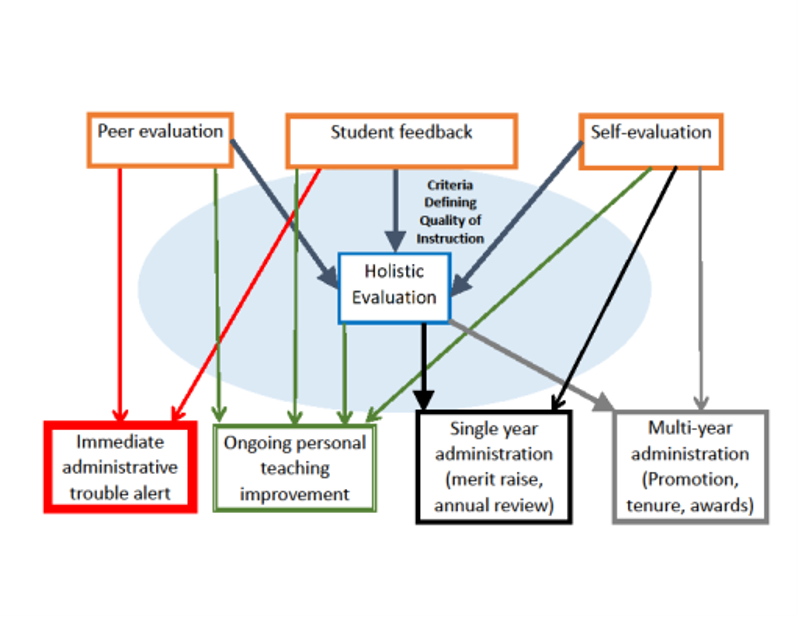Task Force Recommendations for Practice of Evaluating Teaching at Illinois
Illinois already draws upon input from students, peers, and instructors themselves to gather information for teaching evaluation. However, only student ratings are carried out campus wide in a systematic fashion, and the university has no definition of teaching excellence against which a course or instructor can be objectively compared. The Task Force recommends a set of changes in the practice of teaching evaluation at Illinois, each of which is further detailed in the final report.
In general, we recommend that the university should establish a set of criteria that define excellent instruction at Illinois, and then gather concrete and routinized feedback and evaluation from students, peers, and instructors themselves to regularly chart the progress made by course designers and instructors toward accomplishing those standards of excellence. Those inputs will be used in holistic reviews that use input from multiple sources to chart and celebrate an instructor’s progress in achieving excellence in multiple dimensions of teaching quality.
The teaching evaluation system informs a range of functions: self-improvement; trouble alerts; annual personnel functions like merit raises and contract renewals; and multi-year personnel functions like tenure and promotion decisions and awards. Trouble alerts can be triggered quickly by student feedback or peer reviews (though administrators should gain more information before taking action on the potential issue that was flagged by the alert). Personal teaching improvement can be informed by all individual inputs as well as holistic evaluations. Formal administrative actions should only be informed by holistic evaluations and formal instructor self-evaluation. A schematic of this system is shown in the Figure below.
Figure: Schematic of New Teaching Evaluation System

This new system will address the limitations of our current system in three general ways. First, the system will provide more consistent, actionable, and useful evaluations of teaching design, instruction, and activity. Student feedback and peer evaluations will be more consistent across campus, and will provide clear assessments of progress towards campus expectations on concrete measures of teaching quality that are in the control of instructors.
Second, the system will reduce bias in the teaching evaluation system and decisions that draw upon those evaluations. Student and peer assessments of teaching will be focused on specific performance criteria and thus less influenced by implicit bias than current approaches. The self-evaluation process will provide a structured format to document and reward previously under-appreciated labor such as informal mentoring. Personnel decisions will be made on the basis of holistic evaluations that draw on three voices rather than one, mitigating the influence of bias in any one measure and giving instructors themselves regular and systematic opportunity to provide context for potentially biased assessments. The system of teaching evaluation will not compare instructors directly to each other on metrics that are likely biased against some instructors, but rather evaluate each instructor in terms of their growth towards accomplishing campus standards of excellence.
Third, this new system will make space for important risk-taking in pedagogical innovation. Regular self-evaluations will allow instructors to document their work in making potentially high-value changes to instructional design that may take several years of refinement before being reflected positively in student feedback. This will allow even Assistant Professors to experiment with their teaching practice without excessive concern about the impact of experimentation on student feedback scores.